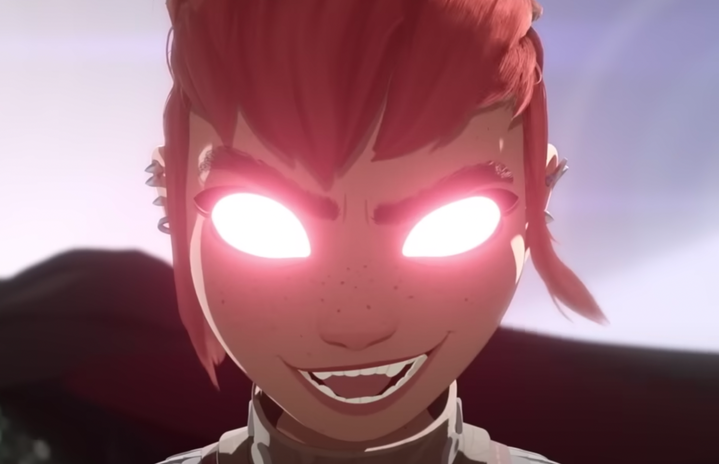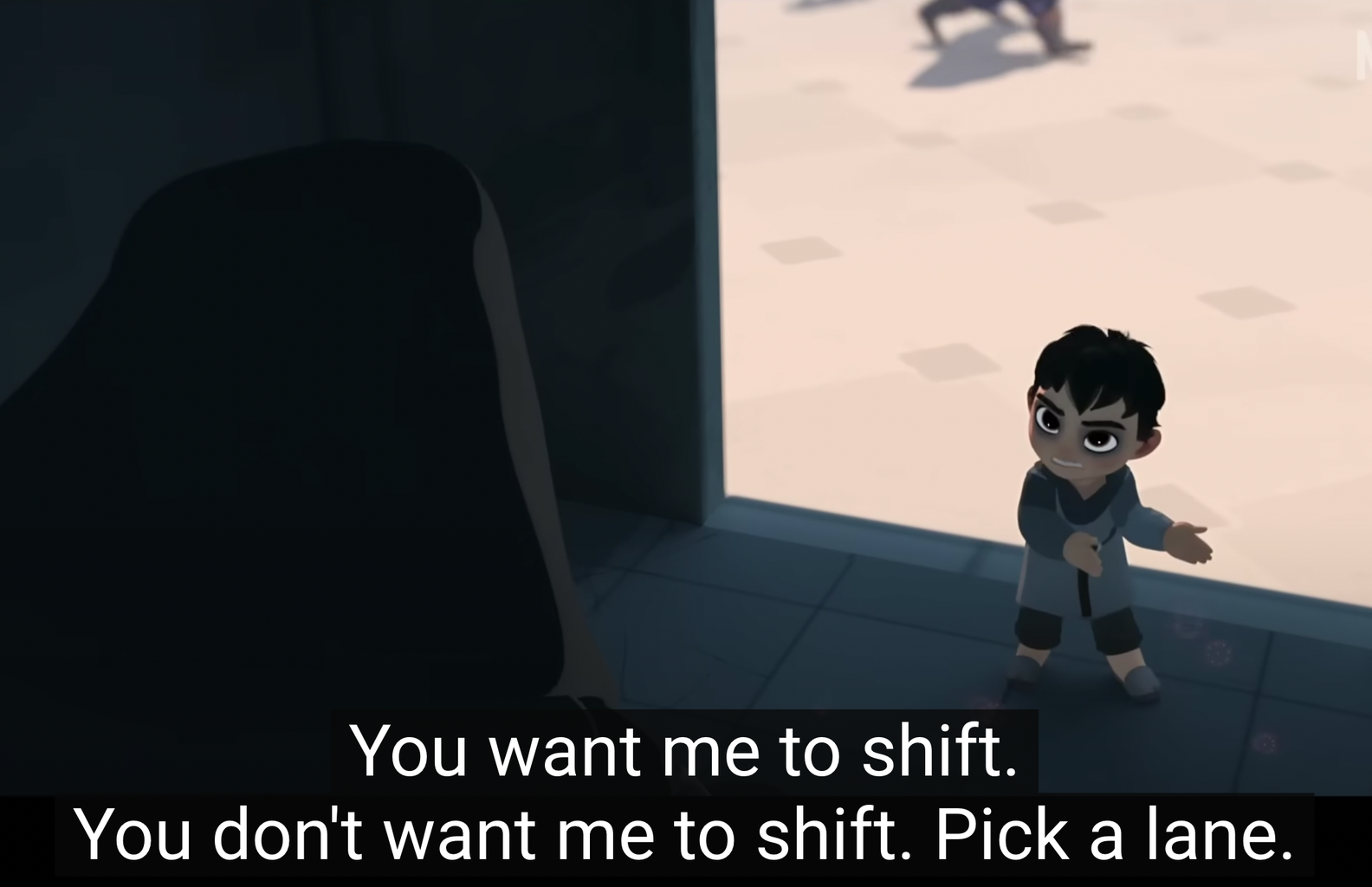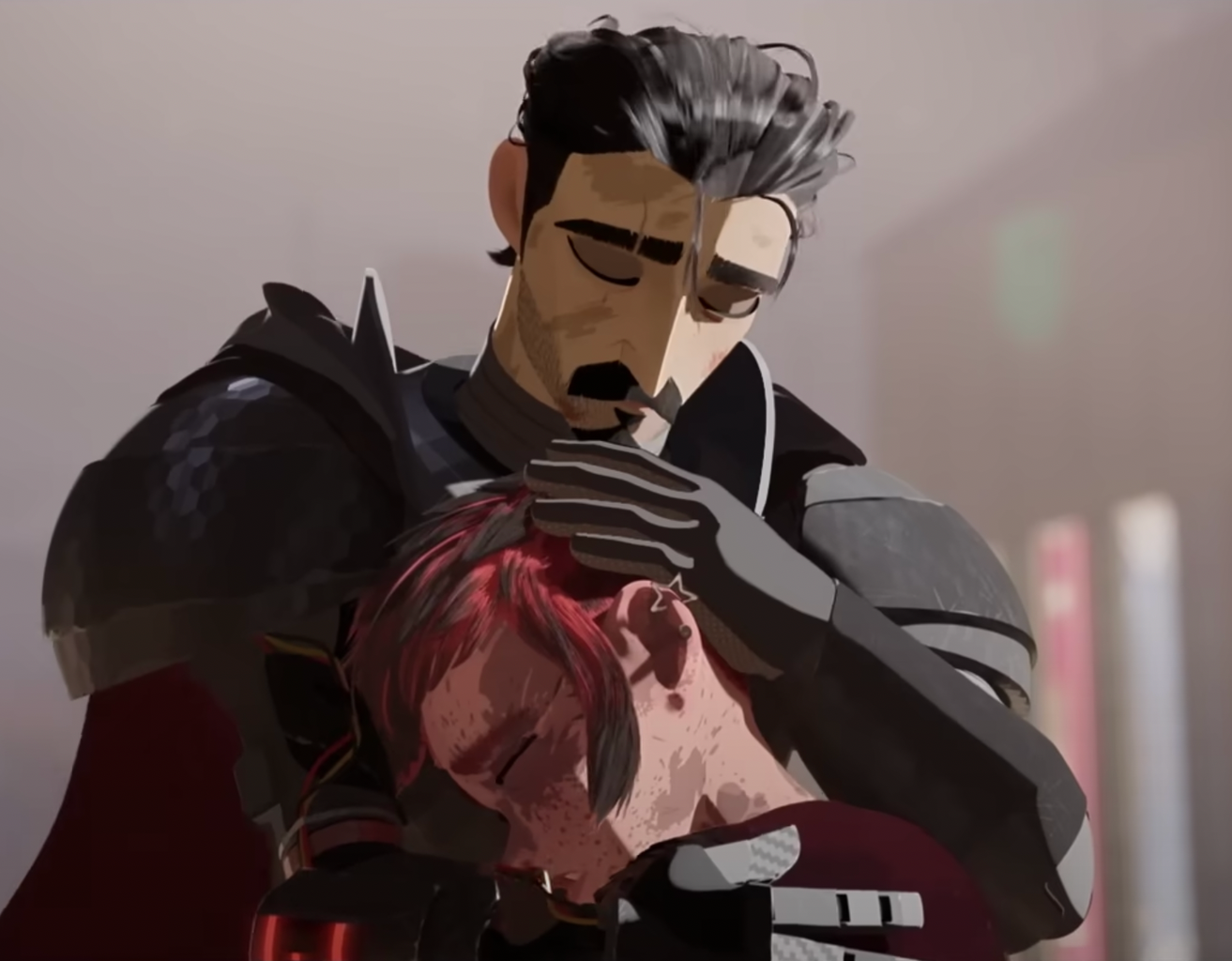Note: In this article, I use she/her pronouns for Nimona because that is how the creators refer to the character in interviews.
Just like its beloved shape-shifting protagonist, Nimona, the movie had to shape-shift multiple times during its development. Adapting to cancellations, new studios, and the threat of scrapping the project entirely, the team behind it had to fight hard to get Nimona to our screens — and boy, am I glad they did.
The work on the film, based on ND Stevenson’s graphic novel of the same name, began in 2015 at Blue Sky Studios. When Disney acquired 20th Century Fox in 2019, they delayed the film’s release several times before announcing in 2021 that they would be shutting down Blue Sky Studios entirely, effectively cancelling the project. Even before that, former Blue Sky Studios employees shared that Disney took issue with the queer elements, especially a kiss scene between Ballister and his boyfriend. Thankfully, a little over a year later, Stevenson shared on Twitter that Nimona was still fighting: Netflix had picked it up and would be releasing it on the streaming service in 2023.
As a huge fan of ND Stevenson’s other Netflix project, the She-Ra reboot, I was thrilled to see an adaptation of another of his creations hit the screen. But what is Nimona actually about?
Nimona takes place in a futuristic society that mixes medieval-style knights with advanced technology, magic, and modern-day TV/internet commentary. We follow two main characters. Ballister is the first commoner the queen has welcomed to become a knight in a thousand years. After someone frames him for killing the queen to stop more commoners from joining their noble ranks, he becomes the most hated person in the kingdom. Nimona, a mischievous, shape-shifting force of chaos, finds him shortly after and decides to be his new sidekick. Together, they will wreak havoc on the kingdom that cast them out! At least, that’s what Nimona thinks. Ballister… not so much.
Given the villainous, chaotic energy of its main character, it’s not surprising that this movie is full of snarky quips, rampant destruction, and battle sequences flashing with Nimona’s trademark pink aesthetic set to punk rock music. But beneath the layers of charming humour and flagrant safety violations, there is a heartfelt queer story about how it feels to be an outsider. Many audience members will resonate with the way Nimona feels out of place and hated in a society that’s not built for her, but the creators made sure that the trans allegories, in particular, are not subtle.
Everywhere Nimona goes, her shape-shifting is met with confusion and distrust. Even Ballister finds it hard to understand. “Can you please just be normal for a second?” he asks gorilla-Nimona. “I just think it’d be easier if you were a girl” (33:05-33:40). “Easier for who?” is Nimona’s response.
It’s a good question. Ballister is well-intentioned, but he also wants Nimona to fit with his own expectations for how people work. Nimona doesn’t fit in that box, and she’s been demonized for it her whole life. She’s understandably tired of people who haven’t bothered to get to know her dictating how she should exist — especially when they aren’t concerned with her well-being, but just want to soothe their own discomfort.
And just in case her shape-shifting wasn’t a clear enough allegory for transness, Nimona herself is also a gender non-conforming character. In another scene that positions Ballister as the harried, confused dad, he tries to control where and when Nimona shape-shifts. Frustrated, Nimona says, “You want me to shift, you don’t want me to shift — pick a lane!” while shifting, mid-sentence, into a small boy. “And now you’re a boy,” gripes the exhausted Ballister. Nimona gives a shark-like grin and says, “I am today” (35:50-36:00).
Nimona is consistent about one thing: that she is Nimona. Everything else is fluid — she can change her shape, gender, or size at any time. The constant change is just as much a part of her as her name is. As Ballister gets to know her, he slowly begins to accept it — but it takes him and the rest of the kingdom a long time to learn that their prejudices are wrong and harmful. The film lingers on Nimona’s pain at being a community outcast. Despite her fierceness and strength in her identity, Nimona is not immune to the hurt of people viewing her as a monster. The film touches on heavy topics, including suicidal ideation — but it handles them with care and finishes with a much-needed happy ending for all of the beloved characters.
I cried my eyes out during this movie, and I know I’m not the only one. It’s heartfelt, creative, funny, and incredibly moving. I am so grateful the team kept fighting for Nimona, and I think it’s important to take this movie as an opportunity to keep fighting alongside the Nimonas of our world too. Through Ballister, the movie sends a powerful message: “I see you, Nimona. And you’re not alone.”






